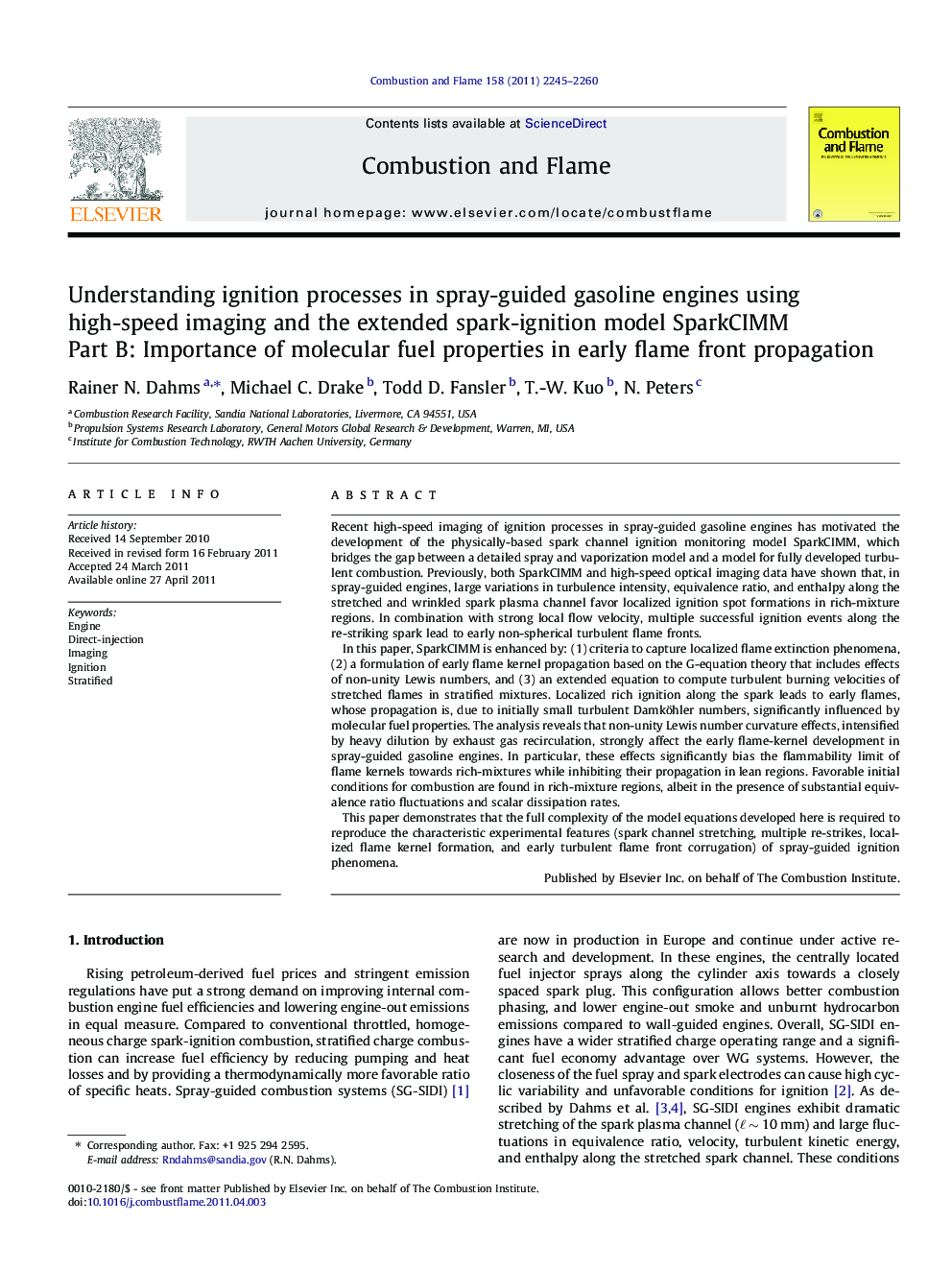| کد مقاله | کد نشریه | سال انتشار | مقاله انگلیسی | نسخه تمام متن |
|---|---|---|---|---|
| 167376 | 457857 | 2011 | 16 صفحه PDF | دانلود رایگان |

Recent high-speed imaging of ignition processes in spray-guided gasoline engines has motivated the development of the physically-based spark channel ignition monitoring model SparkCIMM, which bridges the gap between a detailed spray and vaporization model and a model for fully developed turbulent combustion. Previously, both SparkCIMM and high-speed optical imaging data have shown that, in spray-guided engines, large variations in turbulence intensity, equivalence ratio, and enthalpy along the stretched and wrinkled spark plasma channel favor localized ignition spot formations in rich-mixture regions. In combination with strong local flow velocity, multiple successful ignition events along the re-striking spark lead to early non-spherical turbulent flame fronts.In this paper, SparkCIMM is enhanced by: (1) criteria to capture localized flame extinction phenomena, (2) a formulation of early flame kernel propagation based on the G-equation theory that includes effects of non-unity Lewis numbers, and (3) an extended equation to compute turbulent burning velocities of stretched flames in stratified mixtures. Localized rich ignition along the spark leads to early flames, whose propagation is, due to initially small turbulent Damköhler numbers, significantly influenced by molecular fuel properties. The analysis reveals that non-unity Lewis number curvature effects, intensified by heavy dilution by exhaust gas recirculation, strongly affect the early flame-kernel development in spray-guided gasoline engines. In particular, these effects significantly bias the flammability limit of flame kernels towards rich-mixtures while inhibiting their propagation in lean regions. Favorable initial conditions for combustion are found in rich-mixture regions, albeit in the presence of substantial equivalence ratio fluctuations and scalar dissipation rates.This paper demonstrates that the full complexity of the model equations developed here is required to reproduce the characteristic experimental features (spark channel stretching, multiple re-strikes, localized flame kernel formation, and early turbulent flame front corrugation) of spray-guided ignition phenomena.
Journal: Combustion and Flame - Volume 158, Issue 11, November 2011, Pages 2245–2260